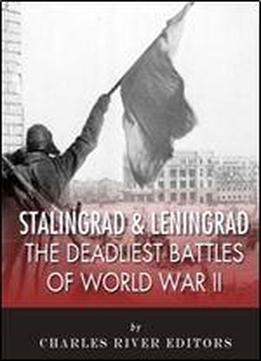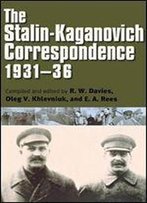
Stalingrad And Leningrad: The Deadliest Battles Of World War Ii
by Charles River Editors /
2014 / English / PDF
9.7 MB Download
*Includes pictures. *Includes accounts of the battles by citizens, soldiers and important generals. *Includes a bibliography for further reading. "When Barbarossa commences, the world will hold its breath and make no comment." - Hitler World War II was fought on a scale unlike anything before or since in human history, and the unfathomable casualty counts are attributable in large measure to the carnage inflicted between Nazi Germany and the Soviet Union during Hitler's invasion of Russia and Stalin's desperate defense. The invasion came in 1941 following a nonaggression pact signed between the two in 1939, which allowed Hitler to focus his attention on the west without having to worry about an attack from the eastern front. While Germany was focusing on the west, the Soviet Union sent large contingents of troops to the border region between the two countries, and Stalin's plan to take territory in Poland and the Baltic States angered Hitler. By 1940, Hitler viewed Stalin as a major threat and had made the decision to invade Russia: "In the course of this contest, Russia must be disposed of...Spring 1941. The quicker we smash Russia the better." (Hoyt, p. 17) Once the Siege of Leningrad began in the fall of 1941, the Soviets knew they were in a desperate struggle to the death. In fact, the Russians wouldn't have even been given a chance to surrender if they had wanted to, because the orders to the German forces instructed them to completely raze the city: "After the defeat of Soviet Russia there can be no interest in the continued existence of this large urban center...Following the city's encirclement, requests for surrender negotiations shall be denied, since the problem of relocating and feeding the population cannot and should not be solved by us. In this war for our very existence, we can have no interest in maintaining even a part of this very large urban population." Even though the Nazis never managed to entirely cut off that supply route, during the nearly 900 day siege, which lasted from September 1941 - January 1944, at least 750,000 civilians starved to death, one out of every three or four members of the pre-siege population. The siege was so devastating that estimates of civilian dead from all causes were estimated at over a million. To put the massive death toll of the siege of Leningrad in perspective, roughly 4 times more civilians died at Leningrad than in the two atomic bombings. Of course, the civilians were hardly the only ones struggling around Leningrad during the siege, because soldiers on both sides had to deal with combat and terrible weather conditions over the course of nearly 28 months. By the time the siege was lifted, the Germans had suffered an estimated 1 million casualties, while the Soviets suffered an estimated 1 million dead or missing and over 2 million wounded. Not surprisingly, the city itself was a hollow shell of itself, with over 11,000 buildings destroyed and wreckage strewn everywhere. In the spring of 1942, Germany once more made inroads toward Stalingrad, Stalin's own pet city. Not surprisingly, he ordered that it be held no matter what. There was more than vanity at stake though. Stalingrad was all that stood between Hitler and Moscow. It also was the last major obstacle to the Russian oil fields in the Caucuses which Stalin needed and Hitler coveted. If the city fell, so would the rest of the country, and Hitler would have an invaluable resource to fuel his armies. Altogether, the Battle of Stalingrad was the deadliest battle in the history of warfare, and the Soviets' decisive victory there is considered one of the biggest turning points in the entire war, and certainly in the European theater.











